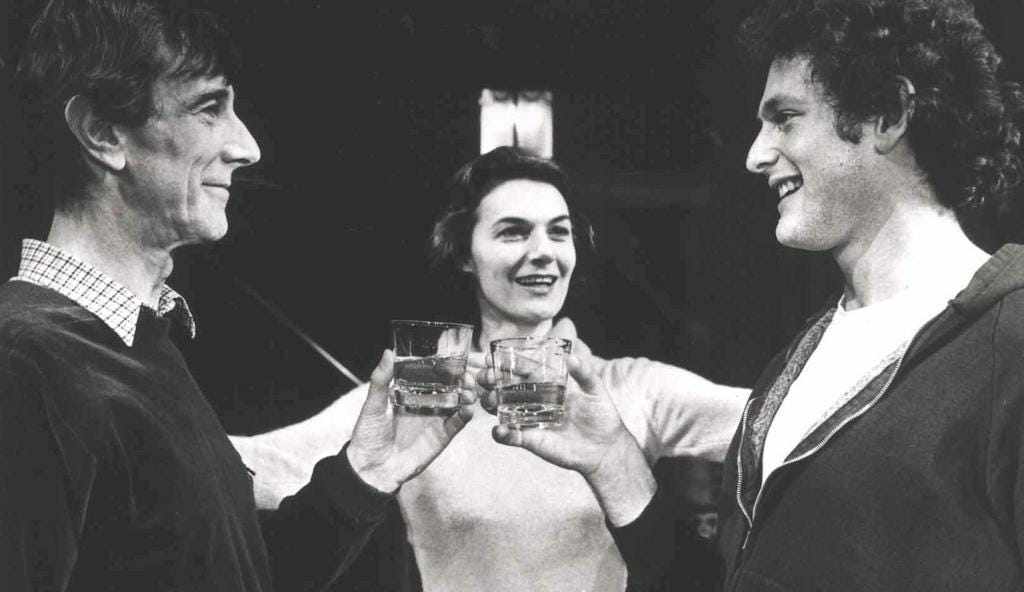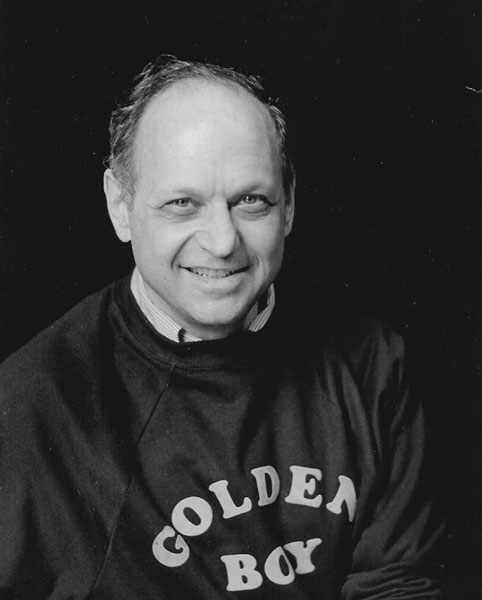
January 2, 2023: Theatre Yesterday and Today, by Ron Fassler
Turning on Turner Classic Movies New Year's Day, I was struck by the coincidence of The Philadelphia Story being on the schedule. Only hours before, I had posted a column on a short-lived musical titled Happy New Year, composed of Cole Porter songs lifted from other sources and based on Holiday, also by Philip Barry. I also had mentioned Porter having composed an original score for the 1956 MGM musical High Society, an adaptation of The Philadelphia Story. So, with Philadelphia and thoughts of Barry floating around my brain, I took it upon myself to do a bit of research on both the playwright and the play itself, for which Barry is still most identified some seventy-three years after his death.

With an interest in writing from a young age, Barry was just nine when a story of his was published in a local magazine in his native Rochester in upstate New York. While a student at Yale, he worked on its literary magazine and went on to take post-graduate classes at Harvard where he studied with George Pierce Baker, renowned for training such literary giants as Eugene O'Neill and many other successful male and female playwrights of the early part of the twentieth century. By 1923, Barry had his first Broadway hit with You and I. He was twenty-seven.
Five new Barry plays opened on Broadway over the next three years. Prolific? Certainly. All hits? Hardly. But most showed promise and with Paris Bound, which opened in the final days of 1927, he managed both a highly praised show and the introduction of a new star, Hope Williams. Having only appeared in amateur theatricals, Williams was the daughter of a prominent New York City lawyer and the product of such tony schools as Brearley and Miss Porter's. And with Paris Bound, this debutante and New York socialite became an overnight star. Of her portraying a role close to her own skin, Brooks Atkinson in the New York Times wrote "making her first appearance on the professional stage, Hope Williams plays a waggish friend of the family with complete skill and a deliciously dry sense of humor."

The following year, Barry wrote the comedy Holiday specially for Ms. Williams. As mentioned in my previous column, Katharine Hepburn was her understudy. Years later, Hepburn commented "I stole a great deal from Hope. She was the first fascinating personality from that period, 1929 to 1932, which wasn't really ready for her. She was a woman who blossomed with a little more than she was supposed to.'' Williams retired from acting just eleven years after her debut (she was über wealthy). "When World War II began, everything changed," she once told a journalist. ''I have a ranch in Wyoming, and after my manager was drafted, I had to be there." 😳
Following Holiday, Barry had seven plays open on Broadway between 1930 and 1938, though most were short-lived. In hindsight, he should have slowed down. Experimenting a bit with form, they were not all comedies, which really was his area of expertise. Then with The Philadelphia Story, which opened on March 28, 1939, a year-long run of 417 performances would prove his greatest success. Written for Katharine Hepburn, it came at a critical time in the actress's career. Having made her New York stage debut in 1928, by 1934 she was a major Hollywood star and won the Academy Award for Morning Glory, only her third film. However, an ill-advised return to Broadway in The Lake, a few months prior to her receiving the Oscar, was so poorly received that Dorothy Parker famously wrote that Hepburn "ran the gamut of emotions — from A to B." Discouragingly, and in spite of Stage Door, Bringing Up Baby and Holiday (all considered classics today), she was labeled "box office poison" by the decade's end.
By the time 1939 rolled around, Hepburn was back home rebuilding her family's Connecticut estate, Fenwick, after it had been demolished in a hurricane. There, she received a call from her friend Philip Barry, who told her he had her in mind for two plays he was considering writing. They met, and Hepburn liked the one that would become The Philadelphia Story, leading them to work together on the character of Tracy Lord, based on Philadelphia Socialite Helen Hope Montgomery Scott. Hepburn also made a sizable investment in the property and served as something of an unbilled producer of the Broadway production.
Once the play was a hit, Hepburn recognized it was her ticket back into films. Every studio wanted to buy the property and were surprised when their purchase came with the caveat that Hepburn would absolutely repeat her role as Tracy Lord, whether they wanted her or not. You see, it was she herself who owned the film rights courtesy of an on-and-off relationship with Howard Hughes, who bought them for Hepburn for $30,000 and them gifted them to her. MGM won the bidding war and paid Hepburn $250,000. Her plan to regain the spotlight and never be caught behind the eight ball again had worked.


For the film, Hepburn got her first choice of director with George Cukor, and had her mind set on Clark Gable and Spencer Tracy, but neither were available. She approved Cary Grant as C.K. Dexter Haven and James Stewart as Macaulay Connor, who were pitch-perfect (Stewart even won his sole Academy Award of five nominations for Philadelphia Story). She also had two exceptional co-stars for the Broadway production in Joseph Cotten and Van Heflin. Cotten, who created the role of Dex, had gotten his start with Orson Welles's Mercury Theatre on stage and in radio, though hadn't made Citizen Kane yet (that would come one year later). Only thirty-three when Philadelphia Story opened, Cotton had a magnificent voice with a charming southern lilt (he was born and raised in Petersburg, Virginia). He enjoyed telling a story of what his good friend Welles once told him: "You're very lucky to be tall and thin and have curly hair. You can also move about the stage without running into the furniture. But these are fringe assets, and I'm afraid you'll never make it as an actor. But as a star, I think you well might hit the jackpot." Welles was right. Cotten was one of the great film stars of the 1940s and early 50s.

Van Heflin, only thirty when he was cast as Macaulay Connor, must have felt pretty strange watching Jimmy Stewart win an Oscar two years later for a role he had created. Although he must have felt even stranger when two years after that, he would be an Oscar winner for his portrayal of an intellectual, alcoholic gangster in Johnny Eager. If you've never seen Heflin's supporting performance, he all but steals the picture. He went on to a career that him playing opposite the likes of Judy Garland, Lana Turner and Barbara Stanwyck, but Heflin also returned to the Broadway stage successfully in A View from the Bridge and A Case of Libel. His final feature film was the all-star Airport (1970) as Guerrero, the passenger holding a bomb in his briefcase and intent on killing himself. Investing his last few dollars in some flight insurance prior to getting onboard, his sole objective is that his wife be taken care of upon his death. Some critics felt Heflin was overacting, but I found his performance harrowing.

The role of Liz Imbrie in Philadelphia Story, for which Ruth Hussey was Oscar nominated, was first introduced by the great Shirley Booth. With an inimitable voice, musical beyond measure, Booth had received no formal training as an actress. Her abilities were mined by simply doing; working tirelessly in stock for years before making her Broadway debut in Hell’s Bells, a 1925 melodrama. She was cast as the ingénue opposite a young juvenile named Humphrey Bogart, and from that time on she never stopped. After her debut, Philadelphia Story numbered her fifteenth show in fourteen years — most impressive. And in 1943, she became a cast member of one of the most famous radio shows of the day, Duffy’s Tavern. Heard by millions all over the country each week, the show was co-created by Booth's then-husband, Ed Gardner along with Abe Burrows (Guys and Dolls, How to Succeed), who would later become one of the most sought after writer-directors of the Golden Age of Broadway. She appeared in fifteen more Broadway plays and musicals between 1939 and 1960, among them My Sister Eileen, A Tree Grows in Brooklyn, By the Beautiful Sea, Desk Set, Juno and, last but not least, Come Back, Little Sheba, for which she won the Tony, the Donaldson, and the Variety Poll for Best Actress. Recreating her role in the 1950 movie, she received Best Actress at the Cannes Film Festival as well as the Academy Award. She won two additional Tonys for Goodbye, My Fancy and The Time of the Cuckoo.
She also won two Emmy Awards for the sitcom Hazel, which ran for five seasons and 154 episodes. A total workhorse.

Post-Philadelphia Story, Barry had four more plays make it to Broadway before his untimely death at age fifty-three. Only one, Without Love, which starred Katharine Hepburn, performed well enough at the box office (despite weak reviews). When her contracted fourteen weeks were up, Hepburn chose not to extend and the show folded, though she went on to play it opposite Spencer Tracy in one of the nine films in which they co-starred together. Barry's final original play, Second Threshold, was produced on Broadway posthumously, as his name still meant something to people. It was finished by his friend, playwright Robert E. Sherwood, but only managed to run three months.
It's a bit sad that in all the years since his death in 1949, only two Barry plays have been revived on Broadway. Holiday, starring Laura Linney and Tony Goldwyn at Circle in the Square in 1995 and The Philadelphia Story at Lincoln Center in 1980. That one had Blythe Danner (Tracy), Frank Converse (Dex), Edward Herrmann (Connor), Mary Louise Wilson (Liz) and fourteen-year-old Cynthia Nixon in her Broadway debut as Dinah, Tracy's younger sister.
If you enjoyed this, please check out Up in the Cheap Seats: A Historical Memoir of Broadway, available at Amazon.com in hardcover, softcover and e-book. To receive all future columns by email, hit the blue FOLLOW button above and feel free to comment below or write me at Ron@ronfassler.org.





















Write a comment ...